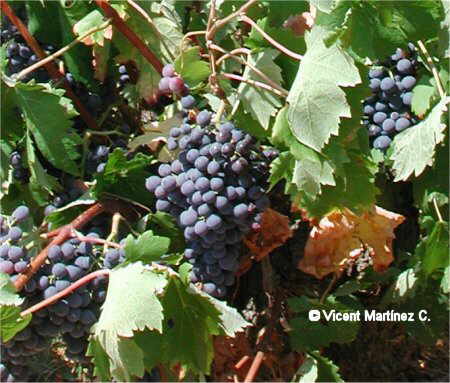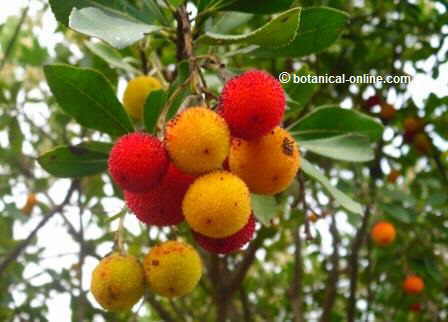Vitis vinifera (Vine, grape vine)

Photo of common grape vine with grapes
Description of grape vine:
– Vine or common grape vine (Vitis vinifera) is a plant native to Asia Minor and the Caucasus, naturalized in the Mediterranean region and North Africa.
– The Vitis genus comprises about 65 species of deciduous shrubs or vines, creeping or trailing, from Vitaceae family.
– The trunk or stump of the vine is cylindrical, with long branches (vine shoots) sprouting from it
– The branches have nodes with buds where leaves and new fruits sprout each year.
– As a vine gets older, branches will become lignified, acquiring a brownish tone with a crust that melts into strips. In some species, they can reach 30m. long.
– It generally has deep roots, but this may vary according to species.
– It has alternate leaves, toothed, palmately, most of them heart-shaped, divided into 3-7 lobes. In autumn, before falling, the leaves turn a yellowish color.
– Tendrils can appear in place of the leaves. They allow the plant to climb, or crawl on the ground if not supported.
– The inflorescence is a raceme or cluster in which flowers are arranged. The clusters can be conical, cylindrical or ovoid. It blooms in spring and contains 5 petals. Flowers are inconspicuous and have a yellowish-green color.
– The fruits are berries that are available in the cluster, formed from flowers. Grains can be ellipsoidal, elongated, spherical or ovoid. Inside, they contain the plant seeds, known as pips.
Habitat:
Vines species can be found in the wild in many temperate regions of the Northern Hemisphere.
* More information about cultivation, properties, wine, etc.
![]() More information on plants.
More information on plants.








